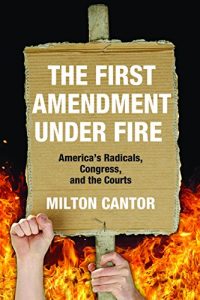The First Amendment is perhaps the most important—and most debated—amendment in the US Constitution. It establishes freedom of speech, as well as that of religion, the press, peaceable assembly and the right to petition the government. But how has the interpretation of this amendment evolved? Milton Cantor explores America’s political response to the challenges of social unrest and how it shaped the meaning of the First Amendment throughout the twentieth century.
This multi-layered study of dissent in the United States from the early 1900s through the 1970s describes how Congress and the law dealt with anarchists, syndicalists, socialists, and militant labor groups, as well as communists and left-of-center liberals. Cantor describes these organizations’ practices, policies, and policy shifts against the troubled background of war and overseas affairs. The volume chronologically explores each new challenge—both events and legislation—for the First Amendment and how the public and branches of government reacted.
The meaning of the First Amendment was defined in the crucible of threats to national security. Some perceived threats were wartime events; the First World War instigated awareness of civil liberties, but in those times, security trumped liberty. In the peace that followed, efforts to curtail speech continued to prevail. Cantor analyzes the decades-long divisiveness regarding First Amendment decisions in the Supreme Court, coming down squarely in criticism of those who have argued for greater government control over speech.
This multi-layered study of dissent in the United States from the early 1900s through the 1970s describes how Congress and the law dealt with anarchists, syndicalists, socialists, and militant labor groups, as well as communists and left-of-center liberals. Cantor describes these organizations’ practices, policies, and policy shifts against the troubled background of war and overseas affairs. The volume chronologically explores each new challenge—both events and legislation—for the First Amendment and how the public and branches of government reacted.
The meaning of the First Amendment was defined in the crucible of threats to national security. Some perceived threats were wartime events; the First World War instigated awareness of civil liberties, but in those times, security trumped liberty. In the peace that followed, efforts to curtail speech continued to prevail. Cantor analyzes the decades-long divisiveness regarding First Amendment decisions in the Supreme Court, coming down squarely in criticism of those who have argued for greater government control over speech.



